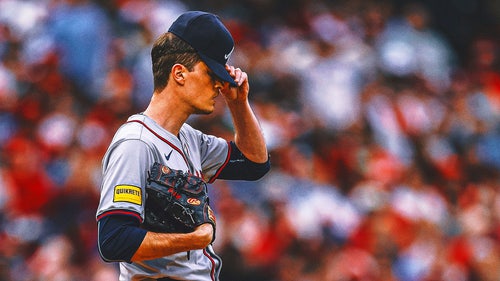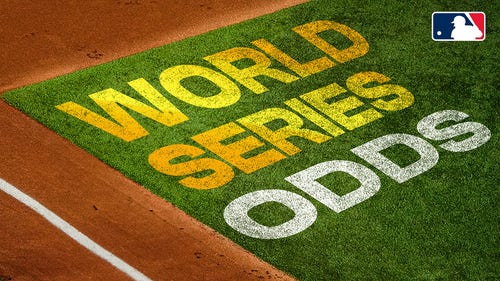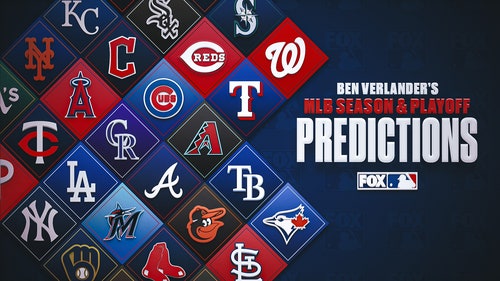
MLB: NL Sabermetric All-Stars

mlb
Gary A. Vasquez-USA TODAY Sports
We're still a few months away from the Midsummer Classic, but with voting already open at MLB.com, it's never too early to take a look at which players are demanding spots at the All-Star Game.
This year's game will take place in Miami, and there are a lot of names (both familiar and unfamiliar) who are putting up statistics worthy of MLB All-Star nominations at this point in the season. However, the online ballot can only tell you so much. If you want to go a bit below the surface – beyond the batting average and home runs – to get a feel for which players have been complete contributors in 2017, this is the article for you.
We'll comb through total offensive value, add in some defensive metrics, and lean heavily on the wRC+, DRS, and fWAR of the world. No, these stats aren't perfect, but they are the best metrics we have available today to measure a player's true value. With the way All-Star Games are referenced when a player's career is over, it's clear that these All-Star appearances aren't just for show, they play a key part in determining a player's legacy long after he has been on the field.
On Monday we chose our American League roster, and today we'll chose the National League. There are plenty of names you'll recognize, and some of the names are the ones you'd choose with even a cursory glance at the surface statistics. But there are also a few hidden gems, and a lot more reasoning given for the top studs actually being the top studs.
Let's get into your NL Sabermetric All-Star roster.

John Hefti-USA TODAY Sports
Catcher: Yasmani Grandal (Los Angeles Dodgers)
This is a win for catcher defense. Grandal's closest competition for the spot was Buster Posey, and he was indeed quite stiff competition. If we go simply by fWAR (which, again, is not the point of this All-Star list), the two are tied at 1.9 wins above replacement through Thursday.
Posey is slashing .345/.435/.540 with seven home runs and 32 RuBIns (runs + RBI).
Grandal is slashing .292/.359/.496 with five home runs and 37 RuBIns.
Posey holds the edge in wRC+ by a difference of 163 to 129. If we were choosing an NL catcher strictly by their offensive performance, Posey would be the guy.
But catcher is a position that requires a lot more depth of analysis than almost any other position on the baseball diamond. And Grandal holds a nice advantage of Posey in all defensive metrics. In fact, Grandal is the best defensive backstop in all of baseball – and it's not particularly close. Grandal has been worth 7.2 runs, per FanGraphs defensive value metrics, with no other catcher in baseball within even two runs of Grandal. FanGraphs doesn't measure pitch framing as of now, but Baseball Prospectus does, and once again no catcher can catch Grandal, as he leads all catchers by 0.6 runs so far this season by BP's pitch framing runs. BP's catcher stats also agree with FanGraphs that Grandal is the best throwing catcher in baseball. Add it all up and it's quite clear that Grandal is a dominant force on the defensive side of things.
As we saw above, it's not as though Grandal has been a let down on the offensive side of things either. His 22 RBI are tied for the most among NL catchers, and his wRC+ of 129 ranks third (behind Posey and Tyler Flowers). Grandal has also been heating up of late, with a wRC+ of 164 for the month of May and four extra-base hits in his last six games. In fact, Grandal has at least one extra-base hit in 10 of his last 14 starts, and if he keeps this up, might even pass Posey on the offensive side of the equation. For now, his defense is enough to lock in his spot as the NL All-Star backstop.

Brett Davis-USA TODAY Sports
First Base: Freddie Freeman (Atlanta Braves)
We'll start by noting that this spot is going to be transferred over to Paul Goldschmidt by the time the actual All-Star Game comes around because of a fractured left wrist for Freeman, but for now boy is he ever deserving.
In the 37 games he played before the injury in 2017, Freeman was the only player to ascend into the Mike Trout/Bryce Harper tier of hitters. Freeman had 14 homers and a wRC+ of 204, making his injury all the more frustrating. Freeman has been percolating the last few seasons, improving his walk rate while increasing his power and even cutting down on his strikeouts in 2017.
In the past calendar year, only Trout and Joey Votto have a higher wRC+ among all MLB players, and no one has a higher isolated power. His 40 home runs in the past calendar year are "just" top five, but no one has more extra-base hits in that time. His line drive rate trails only Adrian Gonzalez, and no one has a higher hard hit percentage since May 24, 2016. Simply put, he's been of the truly best players in baseball in 2017, and really the past year as a whole.
Of course, he won't be available for the All-Star Game so the NL will have to settle for Goldschmidt, a 12-win player over the past two seasons who is hitting the ball even better in 2017. Goldy already has 11 homers and 12 steals, making him the only 10/10 player in baseball this season – again, this is a first baseman we're talking about. He's played 49 of the Arizona Diamondbacks' 50 games this season, a season in which the club is surprising folks with a .612 winning percentage. The NL first baseman position is stacked, as Joey Votto, Eric Thames, Ryan Zimmerman, and a glut of others don't even qualify in this two-horse race right now.

Brad Mills-USA TODAY Sports
Second Base: Daniel Murphy (Washington Nationals)
This is the easiest position to fill on the whole ballot. You don't really need sabermetrics to tell you that the .316/.373/.554 slashing two-bagger on the first place team in Washington should get your vote.
It gets even easier when looking over the competition within the league at second. According to FanGraphs offensive runs statistic, the fourth-best NL second baseman this season (by a healthy margin) has been Eric Sogard who has a grand total of 30 plate appearances for the Milwaukee Brewers this season. The second-best second baseman has been Chris Taylor who is actually a pretty good litmus test for how closely you're following baseball this season. If you've even heard of him, you're doing all right. (The third-best has been Josh Harrison who doesn't even play second base full-time.)
Meanwhile, Murphy is proving (for the second straight season) that his breakout is for real, and it's time to consider him among the game's elites. He's walking at a career-best rate (7.8 percent), hitting more line drives than even last year (24.5 percent), and he has seen his HR/FB rate rise for the fourth consecutive season (up to 14.5 percent this season).
Maybe Javy Baez can hit a few more homers, Cesar Hernandez can bounce back to how he started the season, or DJ LeMahieu can start swinging even some semblance of a bat to keep up with his strong defense and make this a bit of a competition, but for now, it's all Murphy.

Bill Streicher-USA TODAY Sports
Third Base: Nolan Arenado (Colorado Rockies)
We move from the easiest position to choose to arguably the most difficult. There are currently eight players within 1.0 fWAR of each other on the NL third baseman leaderboards, which, given how early it is in the season and how WAR is still far from perfect, basically means you can make an argument for any of those eight.
It would be hard to begrudge you the reigning NL MVP, Kris Bryant, who is slashing .292/.400/.571 and has been the most valuable offensive third baseman in the NL by most metrics. I wouldn't argue with Eugenio Suarez who is quietly putting up outstanding numbers (141 wRC+, best defense at the position) in Cincinnati. Jake Lamb seemingly leaves the yard every other night for the Diamondbacks and leads all NL third basemen with 13 home runs. If you wanted to simply go by fWAR or wRC+, probably the best metrics we have right now, Justin Turner – despite just one home run – is leading the whole gang.
But Arenado is the choice for one main reason. I believe he's actually underrated by the metrics we have right now. Sure, he gets to play half his games in Coors Field, but it seems that we have come so far full circle on this issue that the metrics in place now punish hitters on the Rockies even more than they should. Arenado has a .564 slugging percentage this season, right there with the best NL third basemen. Somehow, there are 11 NL third basemen with a higher wRC+, however. David Freese and Josh Harrison have .462 slugging percentages but are higher by wRC+ (124 and 123 compared to 116 for Arenado). Greg Garcia has a .356 slugging percentage but is nearly Arenado's equal, per wRC+ (111). That seems off.
Arenado actually has a higher batting average and more home runs on the road this season. Read that sentence again. It's time to realign these metrics a bit. Coors isn't making that much of a difference in Arenado's strong start.
Along those same lines, there's simply no way there's a better defensive third baseman in the NL right now than Arenado. Suarez is there by the FanGraphs defensive metrics, but it's early in the season, and Arenado deserves credit for seasons past since those defensive metrics are notoriously slow to become meaningful. Give it time, Arenado will end the season atop the defensive leaderboards and is more than deserving of the hot corner All-Star spot.

Aaron Doster-USA TODAY Sports
Shortstop: Zack Cozart (Cincinnati Reds)
Listen. I'm as shocked as you are. The crop of NL shortstops this season is surprisingly thin, and Corey Seager is really the only competition for Cozart so far, and Cozart has truly been the better player in 2017.
Seager has been solid, his seven home runs lead the position, but Cozart is slugging almost 100 points higher (.563 to .477) and his wOBA is over 40 points higher (.414 to .368).
It's not even as if Cozart has been particularly fluky. Sure, his .395 BABIP is bound to come back to earth a bit, but he's actually been a bit unlucky on his total number of home runs considering the number of fly balls he is hitting and how hard he is hitting them.
Cozart kind of quietly began making these improvements last season when he hit 16 home runs and was one of the best defensive shortstops in the game, en route to a 2.5 fWAR season for the Reds. Now, in 2017, he has greatly increased his walk rate (thanks to pitchers simply not throwing him as many strikes and Cozart being willing to take those pitches) and decreased his strikeout rate. Cozart also showed flashes in the past, but he has never been able to put together a full season of production. With that in mind it's fair to ask whether he'll be able to keep up this type of production, but there are actual legitimate signs that he may just be able to keep this going.

Noah K. Murray-USA TODAY Sports
Left Field: Michael Conforto (New York Mets)
Conforto's breakout seems to be the one thing the Mets have gotten right in 2017. Of course it took Yoenis Cespedes going to the DL to get Conforto regular at bats at the big league level, but he's taken the opportunity and run with it to the point it's hard to imagine even the Mets screwing this one up at this point.
Conforto has been an absolute monster out of the leadoff spot for the Mets in 2017, slashing .336/.429/.693 for a 188 wRC+ that ranks fourth in all of baseball. For reference, that's higher than Bryce Harper! Conforto has been especially beastly leading off games, with a slugging percentage over 1.000 in his 29 leadoff plate appearances. He has four leadoff homers and has come around to score from that leadoff spot 12 times this season, all of which lead all leadoff hitters in baseball in 2017. (Say leadoff again.)
Conforto is the perfect sabermetric leadoff man, as he isn't your stereotypical low-OBP speedy guy who managers have classically slotted atop their lineups, but rather the modern, high-OBP, powerful, let's-get-this-guy-as-many-plate-appearances-as-possible leadoff man. Credit Terry Collins for putting him there, but credit Conforto even more for thoroughly dominating once he got the chance there.
Marcell Ozuna – lord of the hard contact and barrels – is the only player who even comes close to challenging Conforto, but he needs to get more consistent both at the plate and in the field if he wants to mount a real challenge to Conforto.

Eric Hartline-USA TODAY Sports
Center Field: Charlie Blackmon
Another surprisingly weak crop, Blackmon is a relatively straight-forward choice to sit in the center of the NL outfield. On the surface level, his 11 home runs are nearly double any other NL center fielder (three tied with six), he leads the group in both runs and RBI, and if we don't count Magneuris Sierra and his 32 plate appearances, he has the best batting average of the whole group.
More from Call to the Pen
Going a layer deeper, his offensive value has been very nearly double any other NL centerfielder, and his defense has been respectable enough to not even bring anyone else in the conversation.
This season is far from a fluke if you're the type of All-Star voter who wants to reward the true best players in baseball and not just the flashes in the pan (in which case, please stop taking yourself and your vote so seriously). Blackmon is fresh off a four-win season in which he trailed only Dexter Fowler among NL center fielders in terms of fWAR. Fowler is hitting .205 with negative defensive metrics this season, so it's fair to say Blackmon is the best NL centerfielder right now.
It is worth noting that Billy Hamilton is doing amazing things both on the basepaths and in the outfield, but until he can sport a slugging percentage over .350 we can't really take the Billy-Hamilton-as-an-All-Star conversation seriously.

Geoff Burke-USA TODAY Sports
Right Field: Bryce Harper (Washington Nationals)
Welcome to the moral equivalent of center field in the American League. Harper gets the spot here, hands down, and now that it is looking more and more like 2016 was the outlier, he should have this spot on lockdown until he retires or switches leagues (cut to Yankee fans doing inappropriate things to themselves). It's worth pointing out that Scott Schebler and Aaron Altherr have been having surprisingly nice seasons for the Reds and Phillies respectively, but even if you add the fWAR total for both players together, it doesn't reach Harper's 2.6 fWAR in 2017.
Harper is basically having the season Stefon would describe back in his SNL days.
This Harper season has everything. It has Harper walking 16.8 percent of the time, a large factor in his NL-leading (minus the injured Freeman) .450 on-base percentage. It has Harper leaving the yard 14 times, tied for the lead in the National League. It has Harper already eclipsing 80 RuBIns, which no one else in baseball has done yet. It has a midget riding a skateboard.
Seriously, it's so amazing that we have Trout and Harper back to their full selves and dominating their respective leagues in 2017. Feel how you feel about him, but baseball is more entertaining when the floppy-haired Mormon is bashing homers and playing like a little kid after 15 bags of Skittles. Now we just have to find a way to force Harper to face Trout in the World Series sometime in our lifetimes.










































































































































